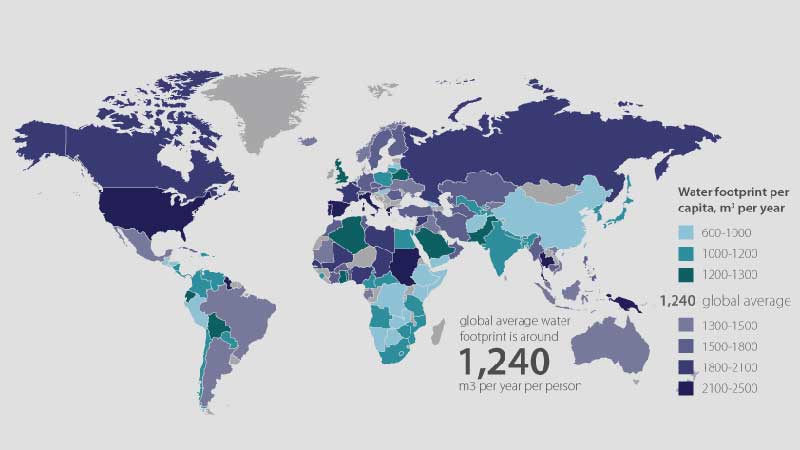
The ancient proverb ‘water is life’ is more relevant now. Water management has become most significant around the world in the prevailing situation where the resources are shrinking and demand continues to rise. Water is vital to nation’s economic growth, well-being of people and sustainability for both human and businesses. But India is becoming a water-scarce country with risks of drought and diminishing groundwater reserves. By 2030, India's water demand is projected to be twice its available supply, implying severe scarcity and an eventual 6% loss in the country's GDP.
The concept of water footprint depends on the context of water consumed by all human activities, including production of goods and services and cultivation of crops. The importance of water footprint can be acknowledged by the appeal of the President of India to farmers, industries and government bodies to opt for efficient usage of water for reducing our water footprint.
The changing water paradigm is putting more emphasis on finding new sources of water to address increasing demand while incorporating ecological concern into nation’s water policies. The connection between water and food are at the focus as many countries around the world are already facing moderate to extreme water crisis and the problem is likely to become more serious as the realities of water availability are being challenged. There are serious thinking across many countries related to water footprint to incorporate it into government policy and corporate strategy. The water footprint of India reveal that staple food and export crops are often produced inefficiently and they use more water and land resources than the global benchmark for these crops.
Caption: Global Water Footprint Per Capita Per Year in Cubic Meters (Source: World Water Exchange)
India is amongst the world’s top producers of cotton, a crop that requires substantial amount of water to cultivate as for the water footprint, cultivating just a kilogram of cotton (the amount required to make one pair of jeans) requires 10,000 liters of water for growing, dyeing and washing. In India, water is also pumped up for agricultural use at a higher rate than it can be replenished leading to groundwater levels plummeting alarmingly.
The irrigation sector in India uses 80% of the available water from the limited sources. The growing demand of the population and especially from the urban settlements including domestic water requirement, industrial requirement, ecology sustenance, and power generation needs to be catered. It is estimated that irrigation requirement has to be lowered to the level of 68% of the total demand by 2050. The present level of irrigation efficiency for surface and ground water is 30% and 55% respectively that is estimated to increase to 60% and 75% respectively by 2025. India is the largest user of groundwater but its water footprint is still much lower than developed countries as its 1089 cubic meters per capita ranks below the global average of 1240 cubic meters. Whereas United States has the highest water footprint of 2842 cubic meters followed by the United Kingdom at 1695 cubic meters per capita. But at the same time, the 1395 million people in India collectively contribute to a significant 12% of the world’s total water footprint.
India's water footprint of 1089 cubic meters per capita ranks lower than the global average of 1240 cubic meters.
A well planned and properly defined policy intervention is needed to conserve, protect, and ensure affordable access to water with proper pricing, integration of environmental concerns into agriculture policy, information sharing, awareness and education, increasing financial support for investment in infrastructure development for effectively lowering of India’s water footprint.